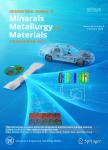Morphology control of aluminum nitride(AlN)for a novel high-temperature hydrogen sensor
为一个新奇的高温度的氢传感器的铝氮化物(AlN ) 的形态学控制作者机构:Institute of Multidisciplinary Research for Advanced Material(IMRAM)Tohoku UniversitySendai 980-8577Japan
出 版 物:《International Journal of Minerals,Metallurgy and Materials》 (矿物冶金与材料学报(英文版))
年 卷 期:2020年第27卷第11期
页 面:1560-1567页
核心收录:
学科分类:081702[工学-化学工艺] 080202[工学-机械电子工程] 08[工学] 0817[工学-化学工程与技术] 0802[工学-机械工程]
基 金:This work was financially support by the Japan Society for the Promotion of Science(JSPS)Grant-in-Aid for Scientific Research(KAKENHI)(No.20H00297 and Innovative Areas No.JP16H06439) the Cooperative Research Program of Dynamic Alliance for Open Innovations Bridging Human,Environment and Materials in the“Network Joint Research Center for Materials and Devices”
主 题:aluminum nitride controllable morphology direct nitridation γ-AlOOH hydrogen sensor
摘 要:Hydrogen is a promising renewable energy source for fossil-free transportation and electrical energy ***,leaking hydrogen in high-temperature production processes can cause an explosion,which endangers production workers and surrounding *** detect leaks early,we used a sensor material based on a wide bandgap aluminum nitride(AlN)that can withstand a high-temperature *** unique AlN morphologies(rod-like,nest-like,and hexagonal plate-like)were synthesized by a direct nitridation method at 1400℃usingγ-AlOOH as a *** gas-sensing performance shows that a hexagonal plate-like morphology exhibited p-type sensing behavior and showed good repeatability as well as the highest response(S=58.7)toward a 750 ppm leak of H2 gas at high temperature(500°C)compared with the rod-like and nest-like ***,the hexagonal plate-like morphology showed fast response and recovery times of 40 and 82 s,*** surface facet of the hexagonal morphology of AlN might be energetically favorable for gas adsorption–desorption for enhanced hydrogen detection.



